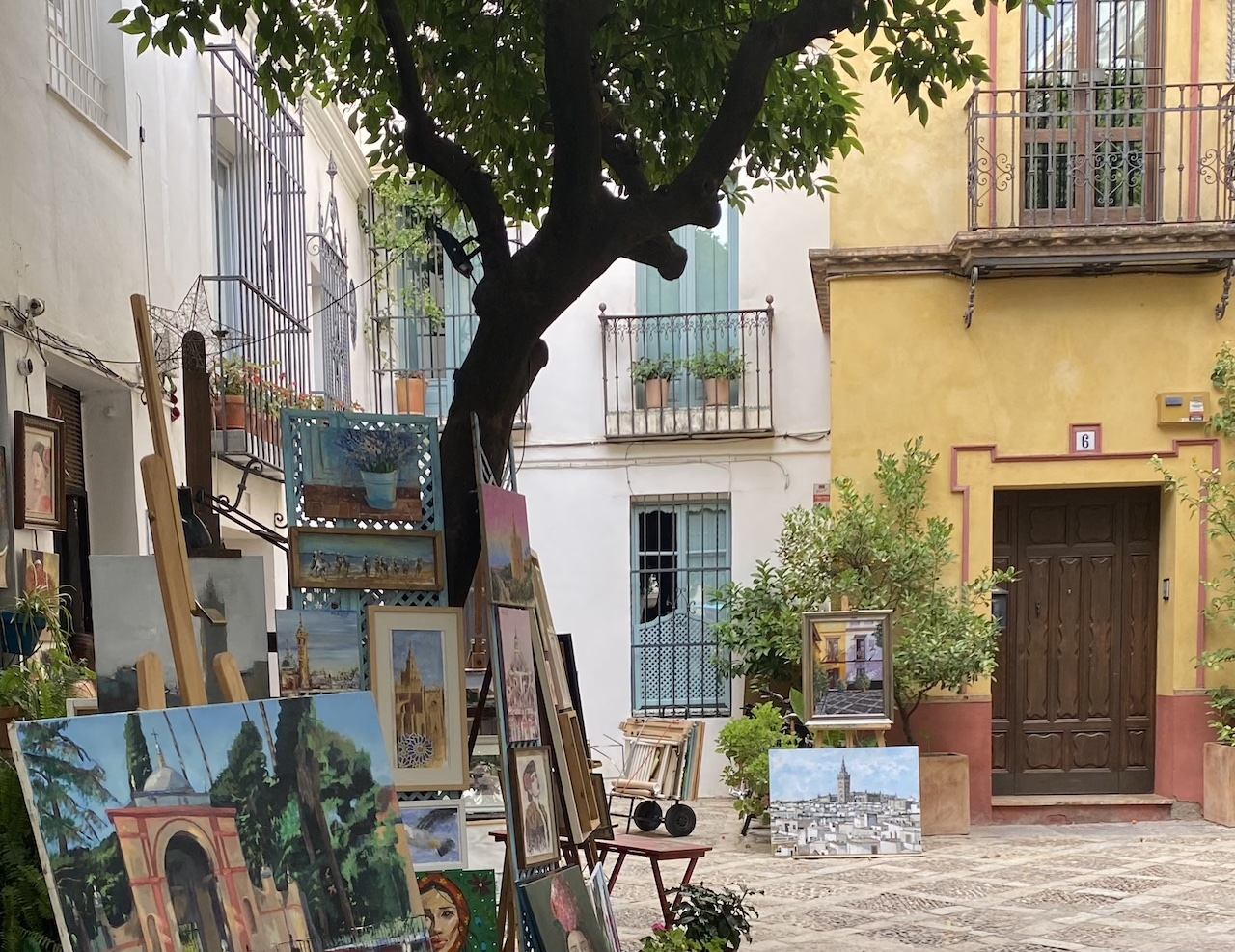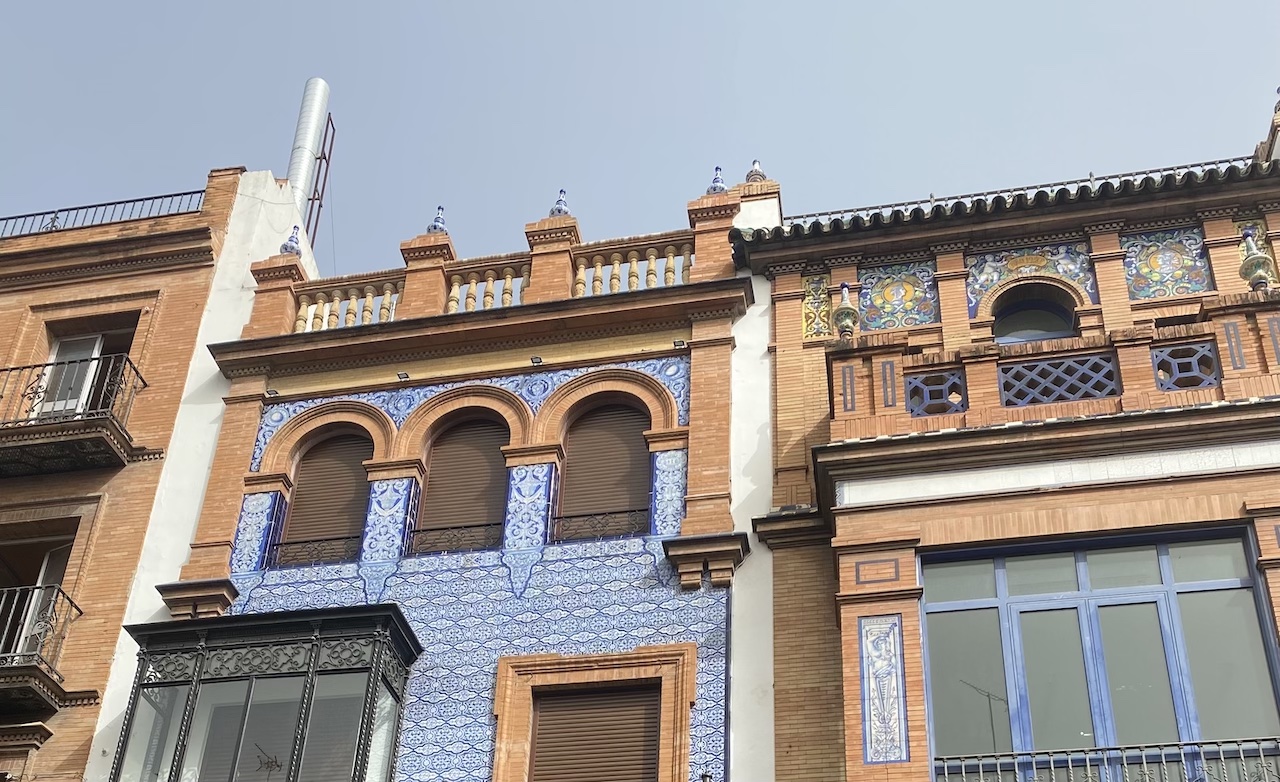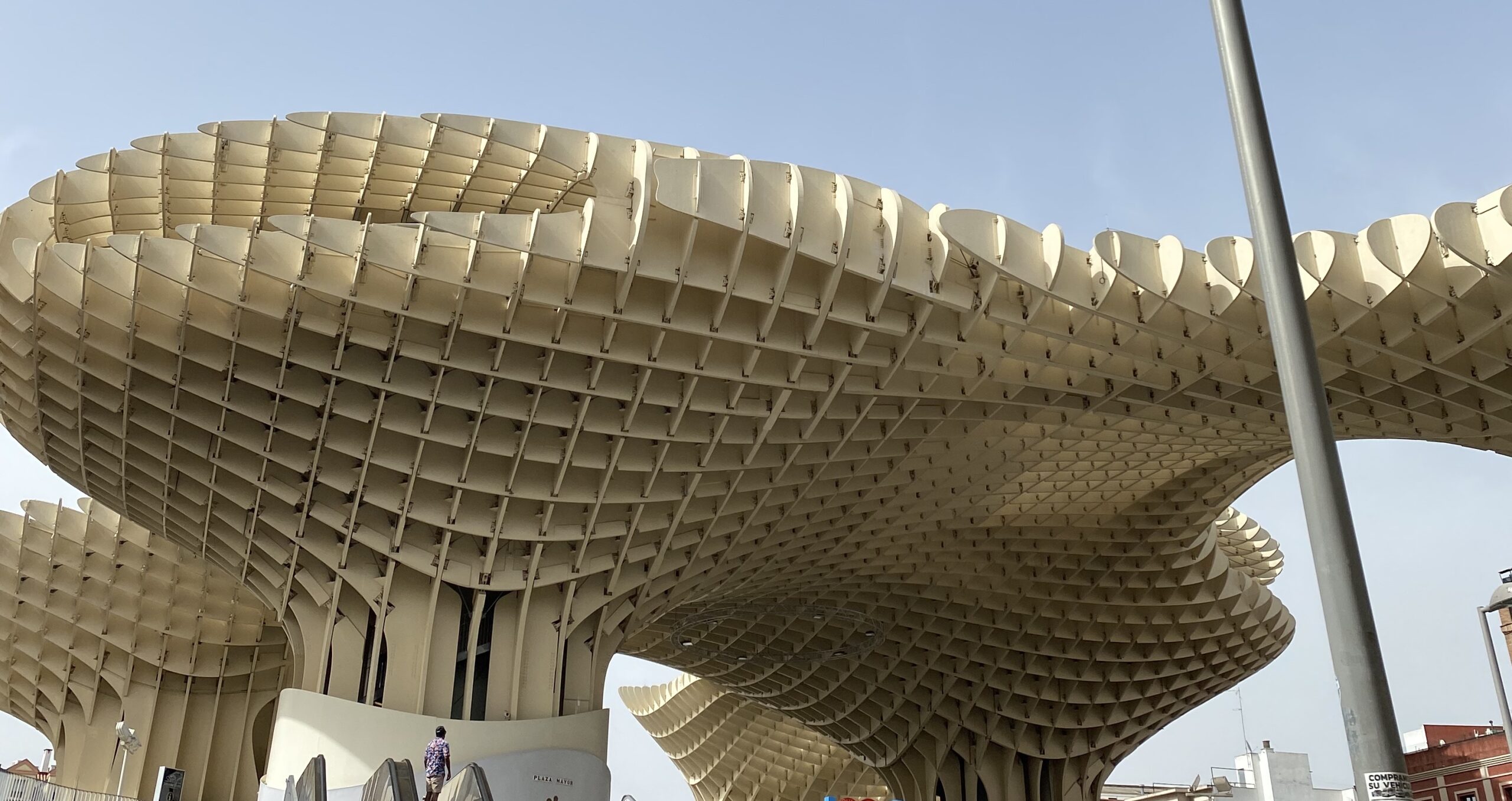Best areas to stay in Seville: the neighborhoods map
Contents
Which are the best neighborhoods in Seville, Spain?
Seville is a very big city, divided into 11 districts and 108 neighborhoods, called “barrios”. Despite being in one of Spain’s most poor regions, the city is mostly peaceful and the quality of life is to die for. So, stick around to discover the best area to live in Seville and where to find accommodation.
Seville neighborhoods map
Here you can find a Seville, Spain map. We have marked on different layers the city’s neighborhoods, public transport, and universities. By choosing one or another layer you can picture immediately the general idea of the neighborhood, and how close it is to public transport and faculties. We hope that this map of the city can help you save time and choose more consciously when looking for accommodation in Seville.
Best Seville neighborhoods for students
If you’re packing for the beginning of your study abroad period in Seville, just know that here you can find multiple ideal areas for students. Obviously, every neighborhood has its pros and cons, but all you need to do is keep on reading our tips to end up in the best areas to stay in Seville!
San Bernardo
San Bernardo is a modern neighborhood with a young environment and this is why it is also one of the most popular areas among university students. Most of the fun activities of the city are here, with a broad offer of restaurants and bars too.
What makes San Bernardo unique – other than rent prices – is its location: you can reach the city center on foot in just 20 minutes. In addition, here there are the Dean’s office of the University of Seville and the Philosophy, Law, Psychology, and Business faculties. If your university degree is not among the ones mentioned above don’t worry! Thanks to the metro you can be anywhere within 15 minutes.
Nervión
Looking for affordable accommodation in Seville? This neighborhood is next to San Bernardo and it’s very appreciated both by students and young workers. Nervión is a great alternative to San Bernardo because it offers the same advantages in terms of location and costs. The neighborhood is well connected with public transportation: it has both a subway stop and a tramway.
Nervión is a vital area, but the atmosphere is less university-like. It’s quite a new and modern neighborhood, where it’s common to find young families. So, if you are looking for an apartment in a young, but still quiet, neighborhood Nervión is the safest option. For football aficionados, this is the ideal area: the Ramón Sanchez-Pizjuán stadium – home of the F.C. team of Sevilla – is exactly here!

Reina Mercedes
Reina Mercedes is the ultimate student neighborhood. It’s sited in the southern part of the city and has lots of super cheap bars and clubs, which are perfect to have fun after a day of studying or to celebrate the end of exams. Finding an affordable apartment in this zone won’t be hard. It’s also a plus for those who study Pharmacy, Architecture, or Engineering since these faculties of the University of Sevilla are right in this neighborhood.
The only downside? It’s a bit far from the center, but nothing that can’t be compensated for with public transport. Reina Mercedes is a neighborhood well connected to the whole city.
Los Remedios
On the other side of the Guadalquivir river, you can find Los Remedios, a neighborhood that offers a broad range of time-out activities and shops. It’s not a touristy area, so you’ll be able to fully experience the authentic Sevillian life. Here there are also some attractions such as the Real de la Feria, the Carriages Museum, the Tobacco Factory, and the San Telmo bridge.
Prices tend to be a bit higher compared to other areas, but finding a good deal is not impossible and it depends heavily on the street. One of Los Remedios’ main streets is Avenida de Républica Argentina, full of bars, restaurants, and little shops.
Triana
Where can I find a place to stay in Seville? Triana is one of Seville’s most famous and frequented neighborhoods for the last few years. One of this area’s assets is its location: crossing the Isabel II bridge you’ll be in the city center in about a 30-minute walk. Among Seville’s neighborhoods, this is the most authentic one.
La Macarena
La Macarena neighborhood in Seville is another iconic students’ area. It’s located up north from the historic center, near the Guadalquivir river. This neighborhood is very well connected to the rest of the city, and in its streets, you can breathe in the typical Sevillian air. A big point in favor of this barrio is that you can reach the historic center on foot.

La Alameda
La Alameda is the bohemian neighborhood of the city, right in the heart of the old town. Its fortune comes from the redevelopment carried out in 2008. The Alameda neighborhood in Seville was given a second life: it caught the interest of investors and was repopulated. Today, La Alameda is one of Seville’s most trendy neighborhoods, rich in history and culture.
Neighborhoods to avoid in Sevilla
Seville is a beautiful city, but also very poor. Andalusia is one of the least wealthy and industrialized regions in Spain, and this aspect can’t not reflect also on the dangerousness of life in Seville in some areas. Here you can find the Ministry of Home Affairs report on criminality in the 2021-2022 time period. The data that the Authorities were able to collect doesn’t provide a full picture. The partial information is only related to the crimes that were reported, but they can still help.
It’s important to keep in mind that Seville has nearly 700 thousand residents and that some areas in the city are real shanty towns. Following you’ll find the three most dangerous neighborhoods in town.
Seville’s dangerous neighborhoods
In the Andalusian capital, the areas that can be defined as dangerous are: El Vacie, Las 3000 Viviendas, Los Pajaritos, and Polígono Norte. We recommend you don’t rent a room or an apartment in one of these areas.
- El Vacie is an out-and-out shanty town. It’s at the city limits and there live families in conditions of extreme poverty.
- Las 3000 Viviendas is a shanty town too and it’s the neighborhood with the second lowest family income in Seville, following Barrios de Los Tres Pajaritos. Here drug dealing, arms traffic, and robberies are commonplaces. The streets are dangerous and shootings between clans are rarely covered by Spanish media.
- Los Pajaritos is located in the East District, near the Las Candelarias area. It’s not a shanty town. There are families and workers that cannot go beyond the absolute poverty line and improve their living conditions. If Las Viviendas is one of Seville’s poorest neighborhoods, Los Pajaritos is known for being Spain’s poorest one.
- Polígono Norte is another area in Seville to avoid. Located very near Parque Alamillo, it’s Spain’s ninth poorest neighborhood.
Useful info: transportation and markets in Seville
Two additional decisive factors when choosing a house are transport and first necessity goods shops. Make sure to consider the proximity to public transportation when searching for the perfect neighborhood to call home!
Where to rent a car in Seville?
The most convenient way to move everywhere is by car. Even if you’ll move with public transport, knowing where you can find rental cars in Seville can always come in handy. The three best car rentals are:
- Centauro: it’s located at the exit of Santa Justa railway station.
- OkMobility: this one is also near the Santa Justa station,here’s exactly where.
- SIXT: there are several in the city: at the airport, at the railway station, and in the city center.
Seville subway
Seville is one of the few cities in Spain to have a metro system. The line connects the opposite poles of the city: at the west the Mairena del Alijaraje neighborhood and at the east the Montequinto one, passing through Triana and Los Remedios, San Bernardo, and Nervirón. The subway is divided into three different zones and the prices change based on the zone (or the zones) that you want to pass through.
Buses lines
However, the subway doesn’t cover the whole city, so you might need a bus. That won’t be a problem since Seville counts on fifty lines. The company that offers this service is called TUSSAM and here you can find all the information with an interactive map of the operating buses.
How to move to the Andalusian capital? By bike
The hot weather and the few rainfalls make Seville the perfect city where to move in by bike. You’ll find an operative service of public bike rental called “Sevici” with two membership options: the yearly one (33,33 euros) and the weekly one (13,33 euros). You can visit their site to know more!
Local and street markets in Seville
Experience the authentic flavors of Andalusia by visiting the local markets in Seville for your grocery shopping. Don’t miss the opportunity to taste traditional and unique ingredients while discovering your new home. Here are a few markets to check out during your stay:
Mercado de la Encarnación
In the heart of the city, in the famous Seville Setas, you’ll find a very well-known market: Mercado de la Encarnación. Here tradition and modernity meet: you can buy fruit, vegetables, meat, and fish inside a very unique wooden building, which is part of a pioneering architectural project. Mercado de la Encrnación is a great way to explore the city and discover local flavors! But remember, try to arrive early in the morning or in any case before 1 pm to avoid finding it close.

Mercado Lonja de Barranco
This is a perfect outdoor market to taste the local cuisine and wander between several stands of fresh produce, meat, and other food products.
Mercado de la Feria
Mercado de la Feria is located in the Alameda neighborhood, a little bit out of the center compared to others, and for that, it’s more authentic.
Here you’ll find foodstuff and small bars with tapas and drinks where you can rest and look around.
Mercado del Arenal
Mercado del Arenal is open on Mondays, Tuesdays, and Sundays.
Originally it was a convent of the Italian Pópolo order, built on grounds outside of the city walls. When it was once again a city’s property, Mercado del Arenal was turned into a prison, but it kept the convent’s name. Today, it is a well-furnished market with historic charm.
Mercado Puerta de la Carne
Mercado Puerta de la Carne is sited in the San Bernardo neighborhood, not far away from the city center. Here, other than foodstuff of every kind, you can find two coffee shops, a pharmacy, a photocopy shop, and a jewelry store. The market is equipped with public toilets.
Villegas market
In Macarena, the Villegas market is an institution. This neighborhood market has been open for years, locals buy typical products from trusted butchers, fish sellers, and fruit sellers. The products’ quality is not up for debate. Villegas market is closed on Sundays, but it’s open the rest of the week from 8.15 am to 3.15 pm.
Palmeritas market
The Palmeritas market is a traditional market located in the Nervión neighborhood. Stands are very diverse, in fact, you can find: butchers, delis, coffee shops, fish shops, bakeries, fruit stands, and flower shops.
Here you’ll find the best in the area for an unbeatable price.
Mercado de Triana
Mercado de Triana is a characteristic place, full of scents, colors, and authentic flavors. It’s hidden below the Isabel II bridge and it’s amazing to go grocery shopping. The area in which the market stands is full of history: back in the day, there was the San Jorge Castle, which was the headquarter of the Inquisition Court since 1481. After it was temporarily moved in 1992 because of some digs that were being carried out, the market today is once again in its original site and it’s open every day from 9 am to 5 pm. But on Sundays, it opens at 12 am and closes at 7 pm.
If you’re planning to move to Seville for a study abroad program, finding the right accommodation is crucial for a successful and enjoyable stay. There are many options available in Seville, including rent rooms, apartments, and hostels. It’s important to research and compares your options to find the best fit for your budget and needs. Make sure to consider factors such as location, amenities, and proximity to your school or place of study. With some careful planning and consideration, you can find the perfect accommodation in Seville to make your study abroad experience truly unforgettable.
